Hello and welcome!
Last week, we were very happy to have some guests at the Cathedral of the Holy Cross.
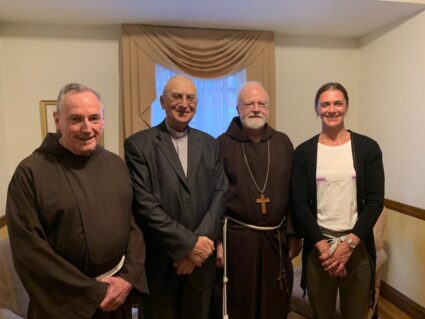
Cardinal Mario Zenari, the Papal Nuncio to Syria, was visiting Boston with his niece Maria, and he stayed with us at the cathedral. Also, Father Simeon Gallagher, who gave the bishops’ retreat here and has given missions in many of our parishes, has been visiting for a few days.
Thursday, I went to St. Anthony’s in Cambridge for a reunion gathering of the archdiocesan group that attended World Youth Day in Portugal last month. They shared some of their experiences with me and then they presented a lovely slideshow produced by Ann Gennaro of images from the pilgrimage.
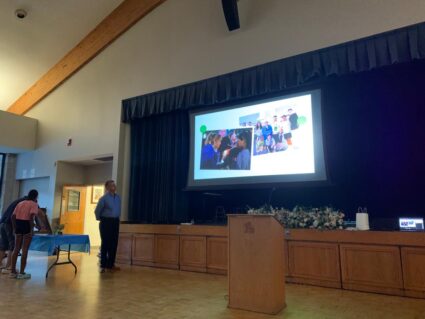
I was pleased to see that they are still coming together as a group and that so many were able to join us for the evening.
Saturday morning, we had the joy of ordaining 10 men as permanent deacons for the Archdiocese of Boston. One other candidate was scheduled to be ordained, but unfortunately, was unable to join us because of illness. He will be ordained soon, once we determine a suitable date and location.
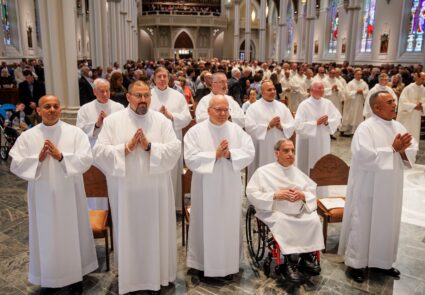
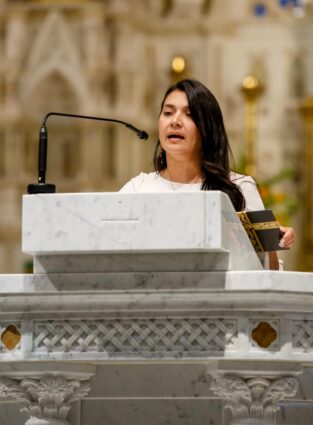
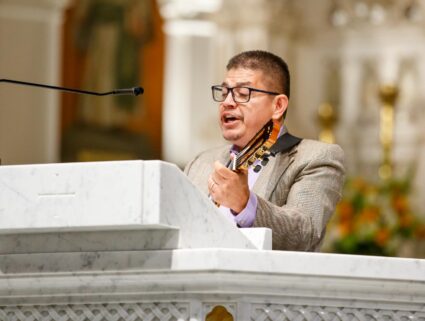
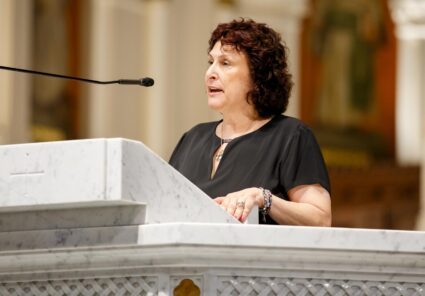
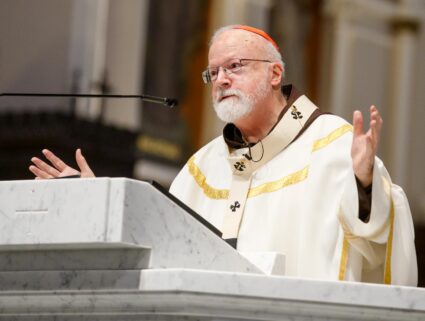
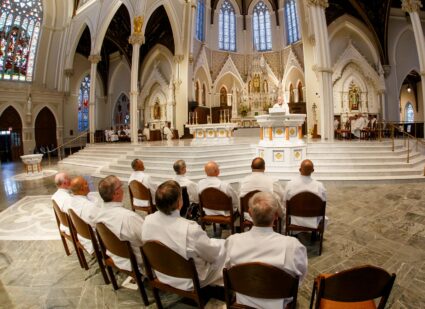
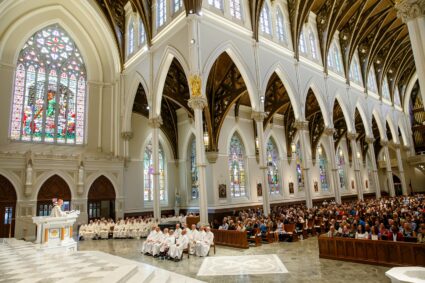
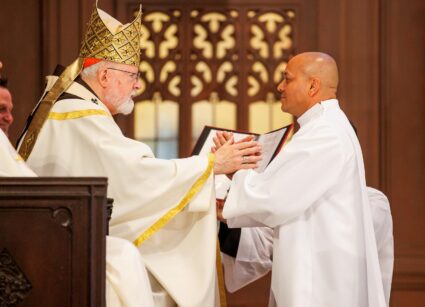
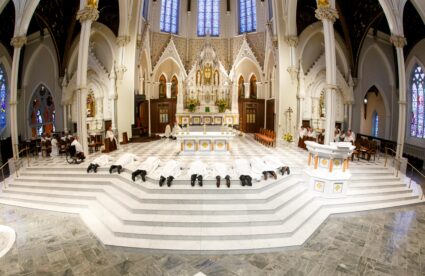
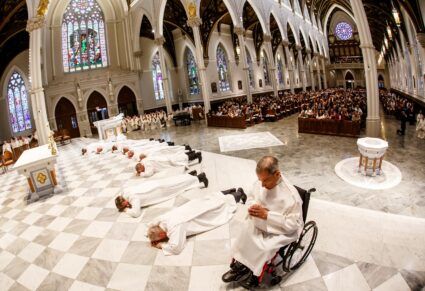
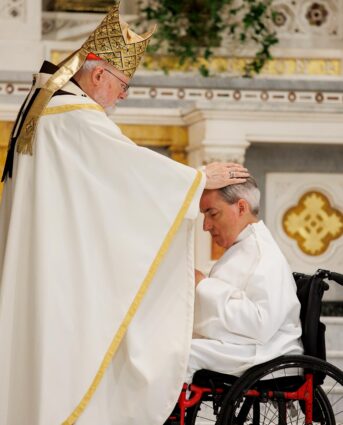
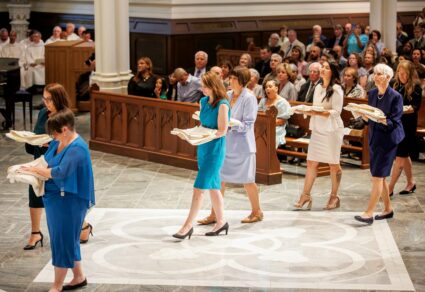
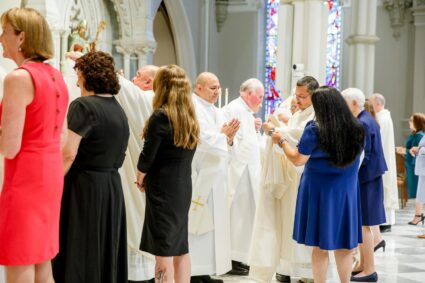
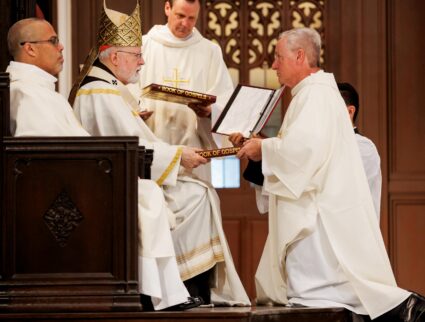
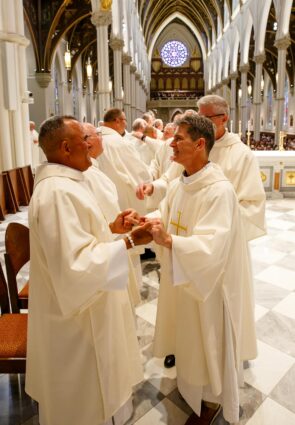
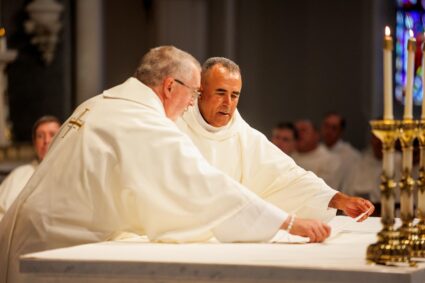
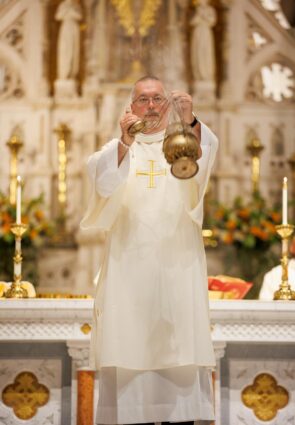
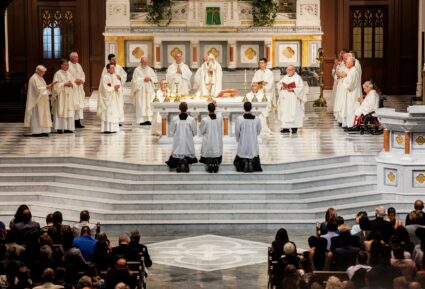
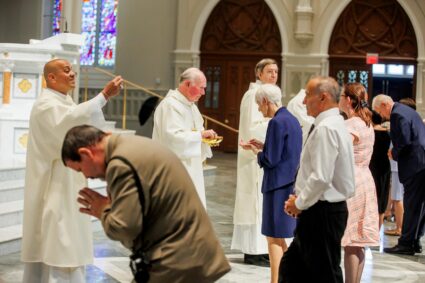
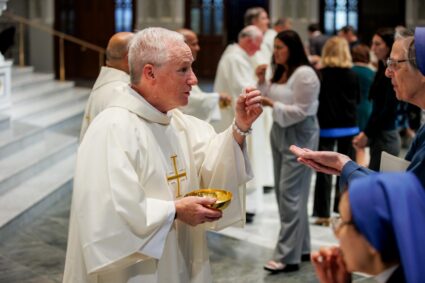
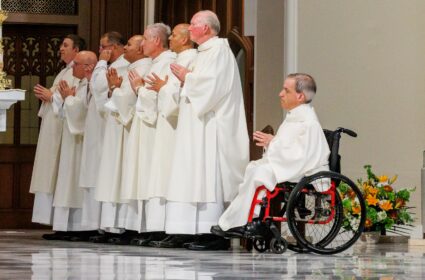
We are very blessed to have ordinations of permanent deacons every year in the archdiocese and there were a number of Hispanics in this group, which is important for our ministry. We are very grateful to Deacon Chris Connelly and all those involved in the formation program.
It was a very full cathedral for the celebration and many deacons accompanied the candidates for the ceremony.
The ministry of deacon is such an important one in the Church today and we hope that the ordination will inspire other men to consider responding to the call to the vocation of the permanent diaconate.
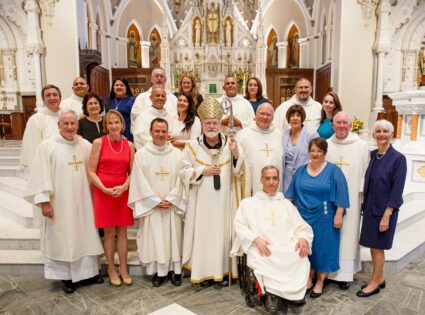
Later that day, I went to Holy Rosary Shrine in Lawrence to celebrate a Mass at a retreat for the Hispanic catechists from throughout the archdiocese. Sister Elsa Narvaez and Patrick Krisak organized the event.
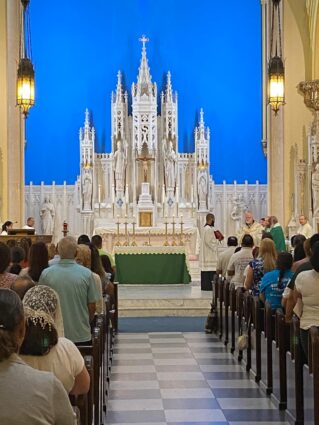
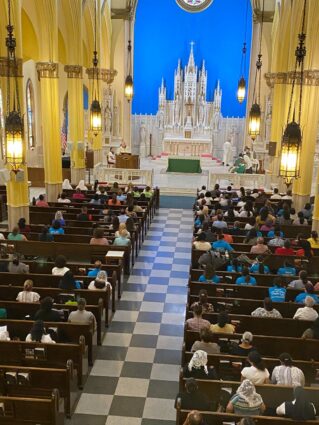
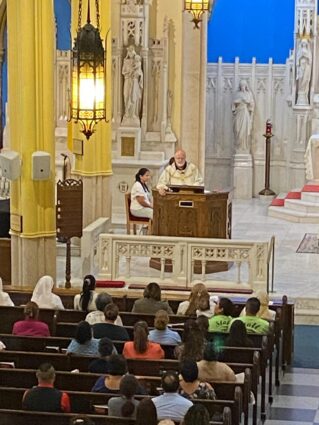
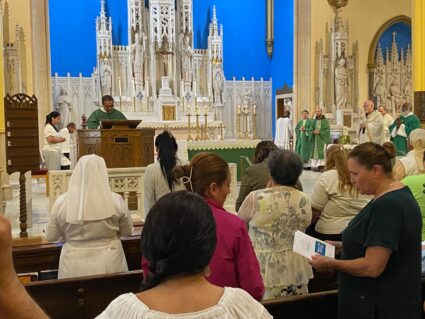
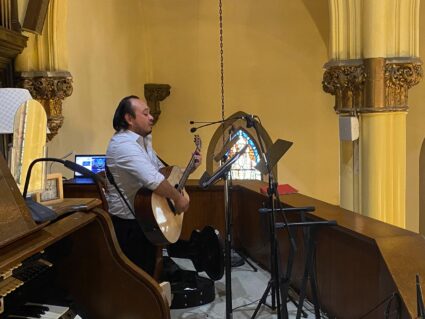
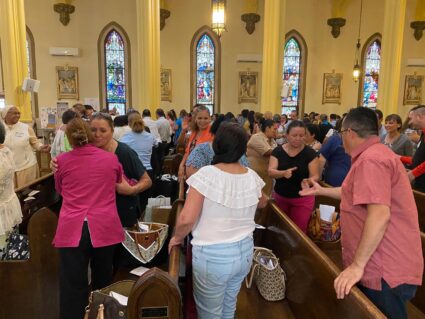
During the program, the catechists received certificates for the various parishes that were represented there.
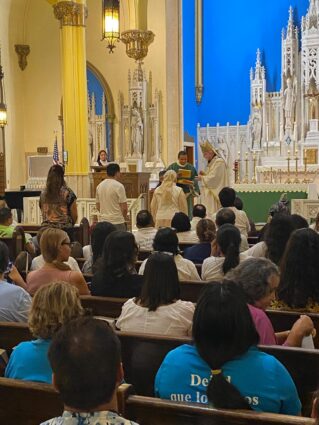
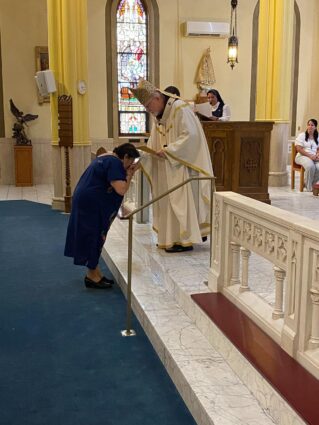
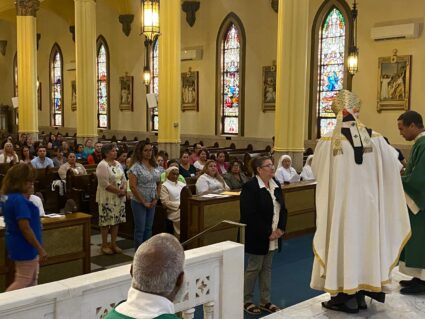
The role of the catechist is so important, and we are gratified that more people are coming forward to be trained for this very crucial responsibility in the Church.
That evening, I went to St. Mary’s in Brookline to see Father Abishai Vase who was in town and visiting with friends. Father Abishai was at Harvard and then entered the seminary for the Diocese of Abu Dhabi. They sent him to study at St. John’s Seminary here in Boston, and now he is assigned to the cathedral of Abu Dhabi.
Sunday, I went to St. Patrick’s Parish in Brockton for the installation of their pastor, Father Przemek Kasprzak.
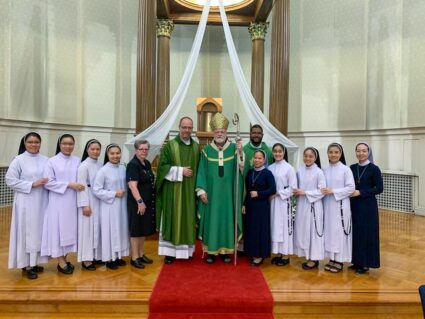
There was great enthusiasm for Father Przemek’s installation and there was a wonderful crowd with many parishioners and local officials including the mayor, fire chief, and police chief.
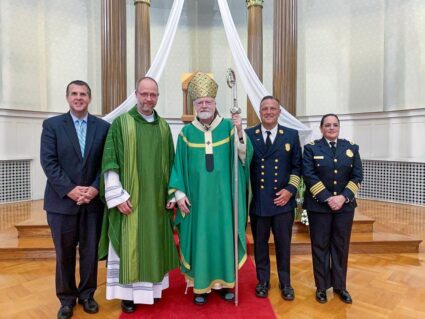
We were also very happy to be joined by Father Przemek’s mother and sister from Poland.
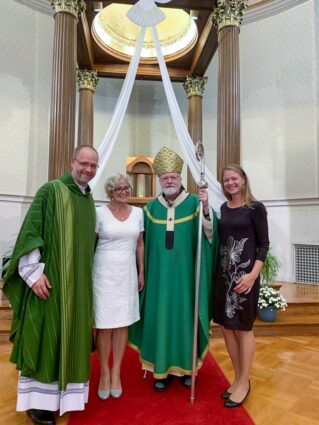
Though the majority of parishioners are Hispanic, it’s a very diverse and inclusive parish. They have also made a lot of improvements to the parish; the church and the hall look beautiful.
It was quite a beautiful celebration and afterward, there was a luncheon.
On Monday, I went to St. Jerome’s Parish in Hyattsville, Maryland for the funeral of my dear friend Mary Conway. When I was a young priest, she was working at the Catholic Standard, the newspaper of the Archdiocese of Washington, and she came with me to the Virgin Islands to start the first Catholic newspaper there, the Catholic Islander.
At the funeral, it was very good to see Father Al Bradley and Diana Parker who were friends of Mary’s from the Virgin Islands.
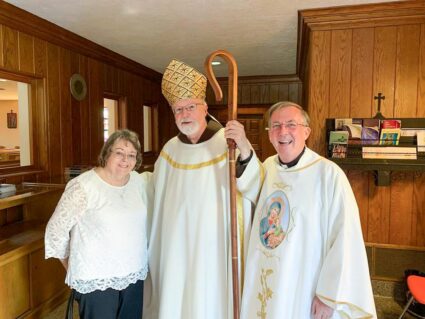
There were also many people from the Catholic Standard, some of whom have been working there since Mary’s time, all those years ago.
There was a beautiful article in the Catholic Standard about Mary’s life, written by her sister-in-law Anne Healey, who worked with Mary at the Catholic Standard before going into politics. I’d like to share that with you here:
Mary Catherine Conway (Aug. 26, 1948-Aug. 13, 2023) was a remarkable, accomplished woman who had an amazing life.
Born in Scranton, Pennsylvania, Mary grew up in Easton, Pennsylvania, and attended St. Bernard’s Elementary School and Notre Dame High School there. She wanted to go to college and did the research and applied for and received scholarships to attend Trinity College in Washington, D.C. She graduated in 1970 and got her first job in journalism at the Catholic Standard, the newspaper of the Archdiocese of Washington, where she began to make her mark.
Mary covered major news events in the nation’s capital. She also met and interviewed many important people – international figures, cardinals and missionaries, local parish priests, women religious and ordinary parishioners, and others who served the poor and the needy. She brought their stories to life in the pages of the Catholic Standard until 1985, when she left to found the Catholic Islander newspaper in the U.S. Virgin Islands.
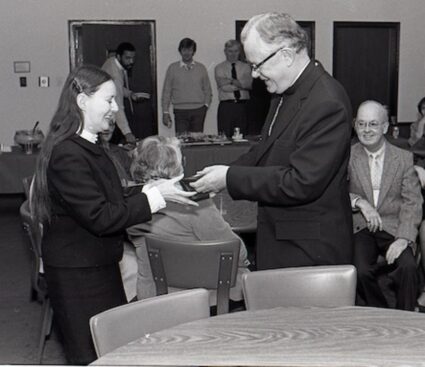
Among the major stories Mary covered was the 1976 consistory when Washington Archbishop William Baum was made a cardinal. That trip to Rome proved to be a turning point. She became friends with Msgr. Lorenzo Albacete, who became her spiritual director. Msgr. Albacete was a brilliant theologian who also had a wicked sense of humor, and he encouraged Mary to follow her dreams.
Not long after that, Mary interviewed a certain Capuchin friar about his work with the tenants of a rundown building in Washington, D.C. She not only wrote a moving story for the Catholic Standard, but she also stayed in touch and became friends with Father Sean O’Malley (now the cardinal archbishop of Boston).
Then, when he was named bishop of the Diocese of St. Thomas in the U.S. Virgin Islands, Bishop O’Malley asked Mary to help start a Catholic newspaper there. She put her furniture in storage and left her books in the care of a colleague and moved to St. Croix, where she was a one-woman editor, publisher, photographer, reporter and business manager. She got the newspaper up and running and kept it going far beyond the original one year she originally signed on for.
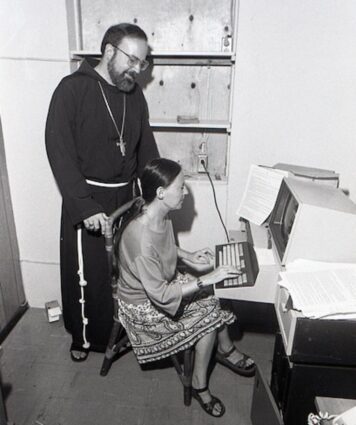
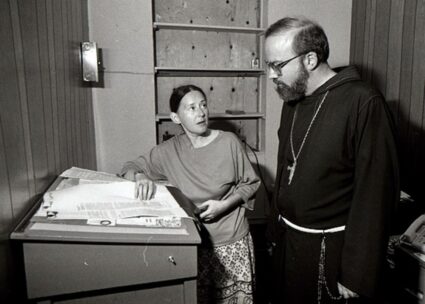
Mary became an islander herself. She lived there for nearly 15 years, surviving and rebuilding after two major hurricanes. She weathered Hurricane Hugo on St. Croix by holing up in one of the ancient buildings on the island that had been built by Danish colonists with 12-foot stone walls. There was a priest who also was on that church property with her. They carried the tabernacle to the safest part of the building and waited out the storm together. That priest later joked that he survived the storm “with Jesus and Mary.”
Ninety percent of the buildings on St. Croix were destroyed. Mary stayed on the island to report and the Catholic Islander stayed in business. Eventually Mary moved to St. Thomas and found a safe basement apartment. Then Hurricane Marilyn hit. She wrote a hair-raising story about her experience in that hurricane. The house above her apartment was blown away, literally.
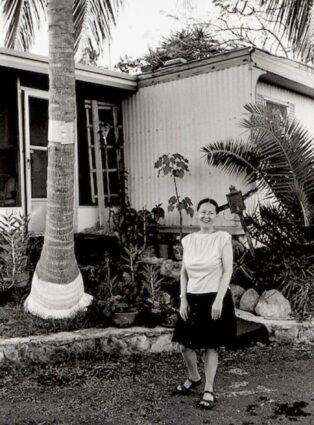
Having lost everything she owned twice, and following other traumatic experiences, Mary finally returned to the U.S. mainland around the end of the century. She lived with family for awhile and then took a job in New York City, working for the Redemptorist Fathers in Brooklyn. She wasn’t there long, when 9/11 happened. The neighborhood where she lived in Brooklyn was home to many first responders. The community was doubly devastated by the loss of life.
Mary worked in Brooklyn, traveling around the Baltimore Province of the Redemptorists, until her retirement in 2011. She lived with family in Florida briefly and then relocated to Hyattsville, Maryland, where she lived until her death. She is survived by four siblings: Neal Conway, Patrick Conway, Helen McLeary and Diane Brown. Other survivors include her aunt, Ann McDonald, and many nieces and nephews and cousins from her extended but very close family.
I would also like to share my homily with you:
If any of you happened to watch the Republican presidential debate on television, I’m sure that you were impressed by the performance of the only woman on the stage that evening, Nikki Haley, former governor of South Carolina and former Ambassador to the United Nations. One of her more memorable comments came by way of a quote from Lady Thatcher, “If you want someone to say something, get a man. If you want someone to do something, get a woman.”
The New Testament was written by men, but it does reveal the faults and shortcomings of the apostles and male disciples, who were often slow to believe, fought among each other for the best places at table, competed for thrones at the Lord’s right and left, denied Jesus, betrayed Jesus, fled into the witness protection program when Jesus was arrested, and found it hard to believe the women when they discovered that Jesus was risen. The women disciples, on the other hand, although often in the background, come across as more courageous, more generous, more faithful, and less self-serving than the men.
We just catch glimpses of these extraordinary women on the pages of the New Testament: Elizabeth, Anna, Mary and Martha, Mary Magdalene, Mary the mother of James and John, and Mary, the mother of John Mark. Miriam, Moses’ sister, was a great heroine for the Jewish people, who often named their daughters to honor her.
In my Spanish parish in Washington, if you stood in the back of the church on Sunday shouted: “Maria, Maria,” 90 percent of the women would turn around to see if you were calling them. My big Irish clan is very similar: we have Mary Louise, Mary Catherine, Mary Ellen, Mary Elizabeth, Maureen, Marie and simply Mary. Obviously, the reason we Catholics are so fascinated by the name Mary is because it is the name of the mother of Jesus, our Blessed Mother.
One of the Marys dear to us all is Mary Catherine Conway, who has gathered us here today with heavy hearts but full of gratitude for her life, her goodness and her friendship that has enriched our lives and bettered our world.
Mary was a faithful disciple like all those women in the Gospel. Mary Conway’s life was defined by her loves — her love for her family and for her friends, and especially by her love for Christ and the Catholic Church.
Mary was also a consummate professional, a real newspaperwoman right down to the cigarettes. My friendship with Mary goes back over half a century. Indeed, Mary’s uncle, Father Marshall taught me in the seminary at Capuchin College on Harewood Road. He gave his classes on church management and finance. Had I known I was going to be a bishop, I would’ve paid more attention.
It was Lorenzo Albacete who introduced me to Mary. We would go to Guisi’s for pizza, to Shoals Cafeteria, or to the IHOP to solve all the problems of the post-Vatican II Church, including the fistfights between Brant Bozell’s “Sons of Thunder” and the “Washington Lay Association” during Cardinal Boyle’s Good Friday services, or like the day a church full of Argentine military stood up and ran out during my sermon. Mary reported that Cardinal Baums’ order was that when Father Sean was preaching, the collection was to be taken up before the Gospel.
My superiors allowed me to live among the poor whom we served at the Centro Católico Hispano. When the people in our unheated and dilapidated apartment building refused to vacate, Mary wrote the article. When pious parishioners drove me home from St. Matthews after confessions and saw the signs “We will not move,” “No nos moveremos”, they would ask in disbelief: “Father Sean, do you live here?”
In 1984, I was named Bishop of the Virgin Islands. I quickly understood that the parishes of the three different islands were so isolated, and there was no sense of communication among them, no sense of being part of a local Church, a diocese. I thought a newspaper would be pastorally very useful.
I had already started the Spanish newspaper in D.C., El Pregonero. So, I consulted with Lorenzo, who encouraged me to invite Mary to the islands. At that point, my entire diocesan budget was $30,000 a year. I had no salary or insurance for myself, let alone anyone else. Frankly, I don’t even remember how I scraped some money together to invite Mary.
Obviously, she was not terribly concerned about the financial aspects of this arrangement. Mary was such a gentle, sweet person, but at the same time, she was a woman of faith that made her a steel magnolia. She did not hesitate to set off on a new adventure in a part of the world where she had never been and knew no one. She ended up living in an abandoned convent, an old West Indian building next to the parish church in Christiansted, St. Croix. The Catholic Islander was born. Mary was a one-woman orchestra. She wrote the stories, took the pictures, did the layout, solicited the advertising and supervised the distribution. The people came to love the paper and look forward to reading it. The Catholic Islander was successful in giving people a sense of identity and common destiny. Everyone marveled at Mary’s capacity to work. She made everything look effortless.
We all survived the terrible hurricane, Hurricane Hugo, that had been the worst storm in 100 years and visited untold havoc on the islands. People’s homes, churches, schools, hospitals, airports were destroyed. The public schools on St. Croix were closed for 2-and-a-half years.
Mary survived not just one terrible storm but two hurricanes in her 15 years on the island. She was undaunted by the experience and never wavered in her commitment to her mission.
Mary made many wonderful friendships with people from the local community, with the Redemptorists like Father Al Bradley, Diana Parker, the Franciscan Sisters, the Belgian Sisters, the Sisters of Charity, Deacon Frank Veraart, Kristen Wintergreen and many others.
Mary has never had an easy life, but her faith has seen her through many great challenges and years of poor health. For many years, we always celebrated Mary’s birthday together with Father Bob McGuigan’s birthday. This year, they celebrated their birthdays together again, in paradise, not just in the Virgin Islands.
In a fundraiser, I was once introduced to a very sophisticated looking woman who asked for permission to shake my hand. I was kind of flabbergasted, but she explained to me that it was not permissible for her to shake the hand of her rabbi. I am not sure whether she was orthodox or conservative. But this strange incident brought to mind the woman in today’s Gospel who, filled with fear and apprehension, stealthily approaches Jesus to touch the hem of his garment. In Jesus’ day, men and women did not interact socially except on rare occasions. I thought it fitting today to choose a Gospel from the Gospel of Luke, often referred to as “the Gospel of women” that demonstrates Jesus’ many interactions with women.
Luke’s Gospel shows Jesus not only conversing with women as freely as he does with the men, but also engaging in some deep spiritual conversations with women. It is only to the Samaritan woman with five husbands that Jesus clearly reveals that he is the Messiah. Jesus shows his love and compassion by listening to the women who come to him, and he performs many miracles and heals Hebrew, Samaritan, and Gentile women alike.
Today’s Gospel passage appears in all three synoptic Gospels: Matthew, Mark and Luke.
Over 100 years ago, Chicago Protestant Publisher put out a Bible in which all of Jesus’s words are printed in red ink. Eventually, some Catholic Bibles follow the same practice. I think it is helpful to see Jesus’ words in red. As we celebrate this Mass for Mary Conway, Jesus’ words in this Gospel passage are so appropriate and so consoling.
The red-letter words in today’s Gospel are, first of all, to the Apostles who were oblivious to what is happening. “Who touched me? Power has gone out from me.” Jesus’ words here are to help focus his apostles and make them aware that a miracle has taken place. So often, miracles take place, and no one even notices.
Then Jesus addresses the woman who had been afflicted with hemorrhages for 12 years. Matthew and Mark’s Gospel account mentioned that the woman suffered at the hands of doctors, and she spent all of her money on their useless remedies. St. Luke, a physician himself, is more circumspect and, out of professional courtesy, does not criticize his fellow doctors. In those days, a woman who was hemorrhaging was considered ritually unclean and, therefore, could not enter the synagogue or the Temple to pray with the community. So, her suffering is not just physical but also spiritual. Jesus says to her: “Daughter, your faith has saved you; go in peace.” In Mark’s version, Jesus says: “Daughter, your faith has healed you. Go in peace and be freed from your suffering.”
Jesus continues on his way to the home of Jairus, the leader of the synagogue, whose little daughter is dying. Almost immediately, word comes that the girl has died. I’m sure it was the apostles who said: “Why bother the teacher anymore?” They were anxious to get home after so many interruptions.
Ignoring what they said, Jesus told the synagogue ruler, Jairus: “Don’t be afraid. Just believe.” And when they get to the house, Jesus tells the mourners the next red letter words: “Weep no longer, she is not dead but asleep.”
This phrase captures our faith about Mary’s passing from our midst. Life is changed by the end. “The souls of the righteous are in the hand of God and no torment will touch them. They seemed, in the view of the foolish, to be dead; their passing away was thought an affliction and their going from us, utter destruction; but they are in peace.” Or as Jesus says: “Weep no longer, she is asleep.”
Jesus took Peter, James and John with him to witness this miracle. They are the same ones he invited to Mount Tabor to experience the Transfiguration, and likewise, they are the same three Jesus invited to be close to him at Gethsemane during his agony. In the life of discipleship, there are moments of light and joy, mountaintop experiences, when we are able to glimpse the miracles. This is to help fortify us for the moments of darkness, of pain and desolation.
The last red-letter words in today’s Gospel are addressed to a dead 12-year-old girl. Her parents are brokenhearted. They have lost the light of their lives, their little daughter. They were no doubt people of means and had called on the services of the best physicians of their day.
When all else has failed, they turn to Jesus. The Gospel describes the good Shepherd taking the little hand of the dead girl, and he addresses her and says: “Child, arise!”
Unlike St. Luke, a Gentile whose first language was Greek, St. Mark was Jewish, and so quotes for us the very words of Jesus in his own language, Aramaic. There are places in the Gospel where we hear the Aramaic phrases like: “Abba Father,” “Eli, Eli, lema sabachthani!” (My God, my God, why are you forsaking me), “Ephphatha” (be opened), and in today’s Gospel the “ipsissima verba,” the very Aramaic words that Jesus pronounced were, “Talitha koum,” which are often translated as “Little girl, arise.” The literal translation is: “Little lamb, arise.” The Good Shepherd restores the child to her grateful parents and tells them to get her something to eat. It is one of the tenderest scenes in the Gospel.
Jesus worked these miracles to show us his unfailing love for all of us. These are signs that he is calling all of us to live forever in his love. Let Jesus’ red-letter words console our hearts today:
“Daughter, your faith has saved you, go in peace and be freed of your suffering.”
“Do not be afraid, just have faith.”
“Weep not, for she is not dead but sleeping,”
“My little lamb, arise.”
On Tuesday I came back to Boston and on Wednesday I had a meeting with Matt Valliere, who has done a lot of work with his group Patients Rights Action Fund to oppose physician-assisted suicide.
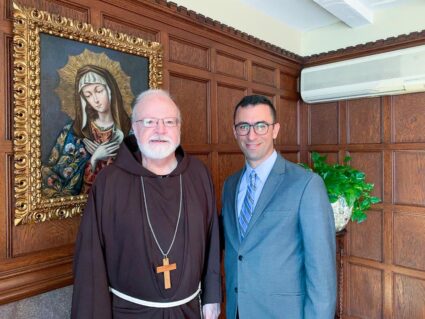
He came to give me an update on some of his projects and it really is amazing what he’s doing.
Wednesday, I attended the ribbon-cutting ceremony for a new facility in the Merrimack Valley that will provide shelter for pregnant women and women with infants.
Deb O’Hara-Rusckowski and her husband Steve of the Order of Malta have been the key organizers of this project. It was named for Father Terry O’Connell, an Oblate Father who originally conceived of the idea of the shelter, and there is an order of Passionist Sisters who will help staff the facility.
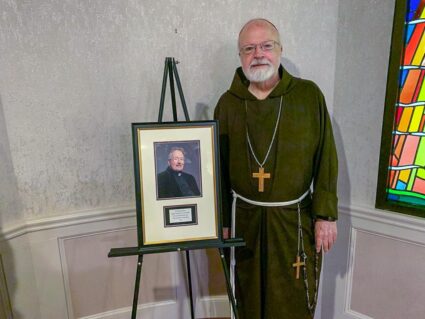
It was a very moving celebration, and later that day, Bishop Hennessey blessed the shelter.
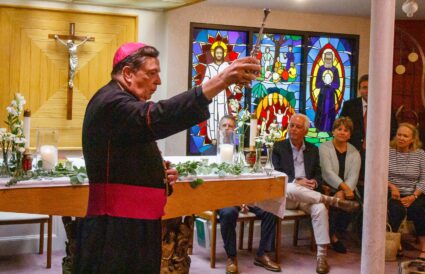
That evening, I had a Mass for the Order of Malta at St. Leonard’s Church in North End.
Thursday morning, I went to Austin Prep for their 60th anniversary convocation to begin the academic year.
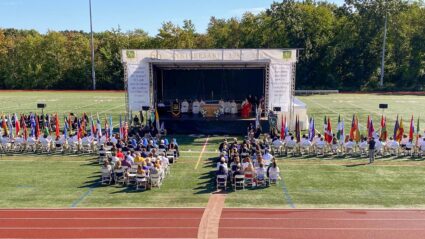
We had the Mass outside, and it couldn’t have been a more beautiful day.
With us at the Mass was, of course, Headmaster Dr. Jim Hickey who is doing a wonderful job, along with several members of the Order of Malta, the Nigerian sisters who are on the staff there, and a number of Augustinian Fathers, representing the school’s Augustinian roots.
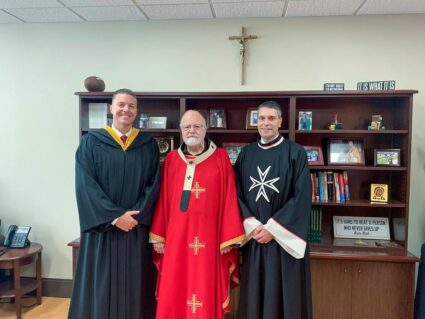
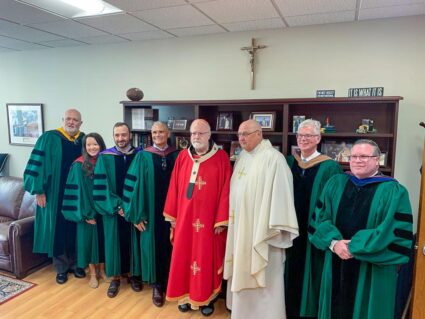
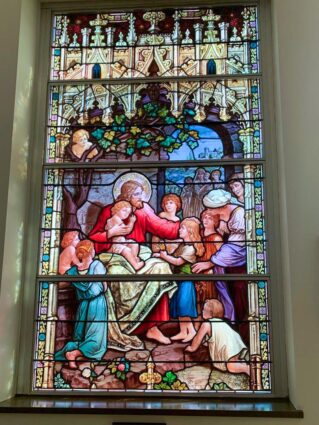
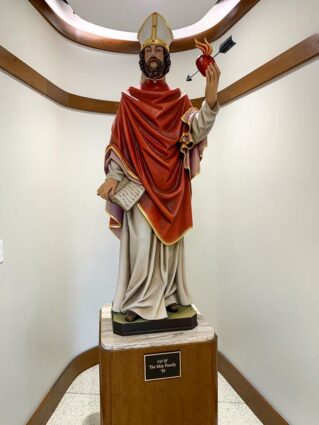
I congratulated and thanked the Augustinians for their role in establishing Austin Prep, which is thriving. They have over 800 students there.
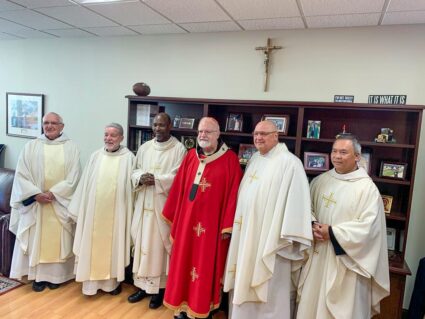
Finally, last night we had our 15th annual Celebration of the Priesthood Dinner. It was a wonderful success, and we are so grateful to all of those who came out to support our priests.

Since we are still waiting for some of the photos and the video from the night to become available, I will share my reflections on that with you next week.
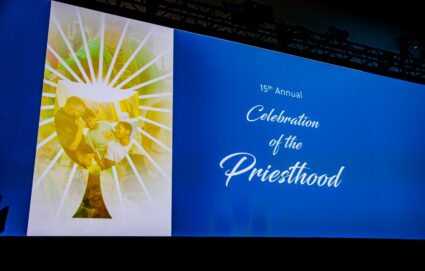
Until then,
Cardinal Seán
